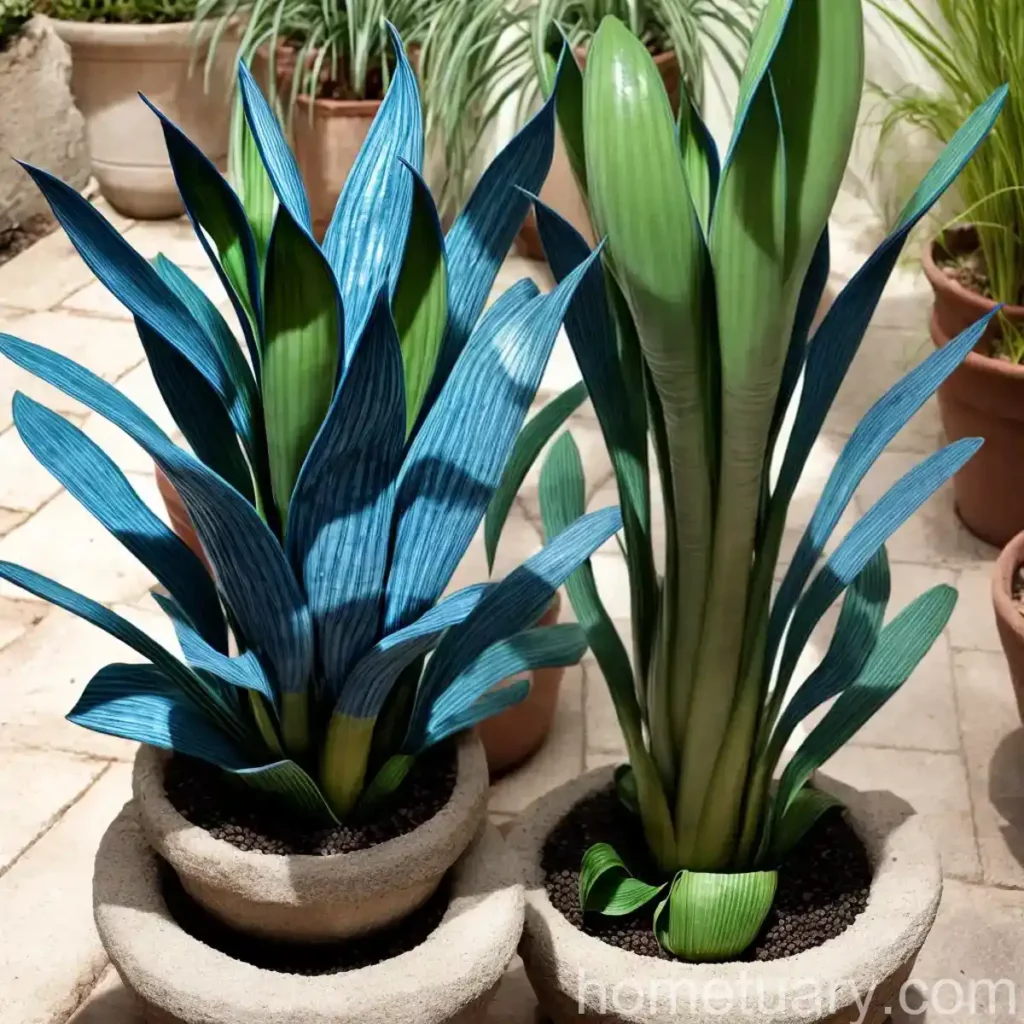Blue Sansevieria (Sansevieria ehrenberghii ‘Samurai Dwarf’): A Comprehensive Guide
What is Blue Sansevieria (Sansevieria ehrenberghii ‘Samurai Dwarf’)?
Blue Sansevieria, scientifically known as Sansevieria ehrenberghii ‘Samurai Dwarf’, is a delightful succulent plant that has gained popularity for its striking appearance and ease of care. This unique plant is characterized by its attractive blue-green leaves and compact, dwarf growth habit, making it a charming addition to any indoor space. In this guide, we will delve into the various aspects of blue Sansevieria care and maintenance, focusing on its cultural requirements, uses, propagation, common pests and diseases, and much more.
Key Takeaways
Blue Sansevieria (Sansevieria ehrenberghii ‘Samurai Dwarf’)
- Scientific Name: Sansevieria ehrenberghii ‘Samurai Dwarf’
- Common Name: Blue Sansevieria, Samurai Dwarf Sansevieria
- Characteristics: Compact, dwarf growth habit, blue-green leaves
- Uses: Indoor decoration, air purification
- Hardiness Zones: 9b to 11
Culture
Blue Sansevieria, also known as Samurai Dwarf Sansevieria, is a versatile plant that thrives in various cultural conditions. Understanding its cultural preferences is crucial for ensuring its optimal growth and longevity.
Uses
Blue Sansevieria is primarily valued for its ornamental purposes and air-purifying qualities. Its unique appearance and low maintenance requirements make it a favorite choice for indoor decoration. Additionally, its air-purifying properties contribute to creating a healthy indoor environment.
Water
When it comes to watering, blue Sansevieria exhibits tolerance to drought conditions, making it well-suited for individuals seeking low-maintenance indoor plants. It is essential to allow the soil to dry out between waterings to prevent root rot and maintain the plant’s overall health.
Sunlight
Blue Sansevieria thrives in bright, indirect light but can also adapt to low-light conditions. However, prolonged exposure to direct sunlight may lead to leaf burn, making it important to strike a balance and provide adequate shade during the hottest parts of the day.
Fertilizer
A balanced fertilizer diluted to half strength can be applied to blue Sansevieria during the growing season, typically from spring to early fall. Fertilizing should be performed sparingly to prevent the buildup of excess salts in the soil, which could potentially harm the plant.
Soil
Well-draining, sandy soil mixtures are ideal for blue Sansevieria, mimicking its natural habitat and promoting healthy root development. A cactus or succulent potting mix can also be employed to provide the necessary aeration and drainage for the plant.
Pruning
Pruning requirements for blue Sansevieria are minimal, mainly focusing on the removal of any damaged or discolored leaves to maintain the plant’s aesthetic appeal. Additionally, occasional division of crowded clumps can help rejuvenate the plant and promote new growth.
Propagation
Propagation of blue Sansevieria can be accomplished through leaf cuttings or division. Leaf cuttings should be allowed to callus over before being placed in a well-draining potting medium, while division can be carried out during repotting.
Container Popularity
Due to its compact growth habit, blue Sansevieria is well-suited for a wide range of containers, including decorative pots and planters. Its unique appearance and low maintenance needs make it a popular choice for indoor container gardening.
Common Diseases
Despite its overall resilience, blue Sansevieria may be susceptible to certain diseases under unfavorable conditions. Recognizing the symptoms and employing appropriate measures are crucial for maintaining the plant’s health.
Disease Diagnosis
Some common diseases that may affect blue Sansevieria include:
– Leaf Rot: Occurs due to overwatering or poor soil drainage.
– Fungal Infections: Resulting from excessively moist conditions.
– Root Rot: Caused by waterlogged soil and overwatering.
Preventive measures such as proper watering practices and ensuring adequate soil drainage can significantly reduce the risk of these diseases.
Common Pests
Pest infestations can pose a threat to blue Sansevieria’s health and appearance, necessitating prompt detection and intervention to prevent damage.
Common Pests
- Spider Mites: These tiny pests can cause stippling and webbing on the leaves.
- Mealybugs: White, cotton-like insects that feed on the plant’s sap, leading to stunted growth and yellowing leaves.
- Scale Insects: These pests often appear as raised bumps on the leaves and stems, causing yellowing and wilting.
Regular inspection and the use of natural or chemical control methods can effectively mitigate pest infestations, preserving the plant’s vitality.
Botanist’s Tips
To ensure the optimal growth and well-being of blue Sansevieria, consider the following expert tips:
– Maintain Well-Draining Soil: Use a well-draining potting mix to prevent waterlogging and root rot.
– Consistent Monitoring: Regularly inspect the plant for signs of pests, diseases, or environmental stress.
– Moderate Watering: Allow the soil to dry out between waterings to prevent overwatering and related issues.
Fun Facts
- Blue Sansevieria is known for its ability to purify indoor air by removing toxins and impurities, contributing to a healthier living environment.
- The distinct blue-green hue of its leaves sets blue Sansevieria apart from other varieties, adding a unique touch to interior spaces.
- The compact nature of the ‘Samurai Dwarf’ cultivar makes it an excellent choice for small spaces and desktop planters.
Links to External Resources
For further information and resources on blue Sansevieria care and maintenance, refer to the following sources:
1. The Spruce – Blue Sansevieria Care Guide
2. University of Florida IFAS Extension – Sansevieria Production Guide
3. Missouri Botanical Garden – Sansevieria ehrenberghii Information
4. Royal Horticultural Society – Sansevieria Plant Care
In conclusion, blue Sansevieria (Sansevieria ehrenberghii ‘Samurai Dwarf’) stands out as a captivating and low-maintenance plant that adds a touch of elegance to any indoor setting. By understanding and implementing the recommended cultural practices and maintenance tips, plant enthusiasts can enjoy the beauty and benefits of this unique succulent with confidence. Whether used as a standalone decor element or as part of a green ensemble, blue Sansevieria is sure to captivate with its charm and resilience.















